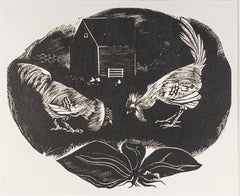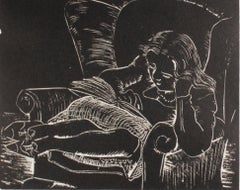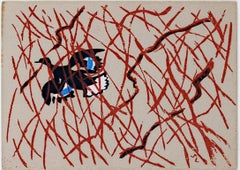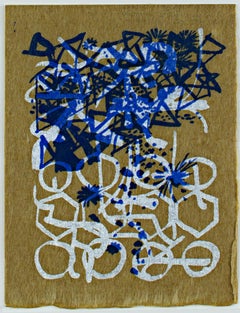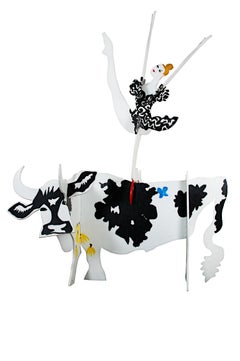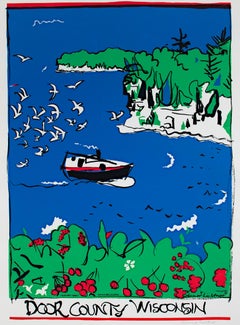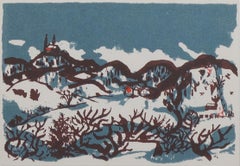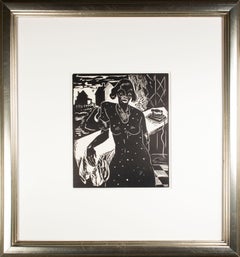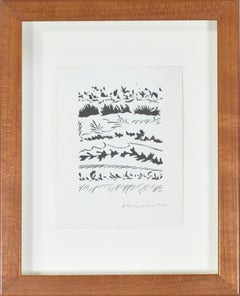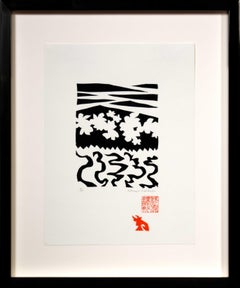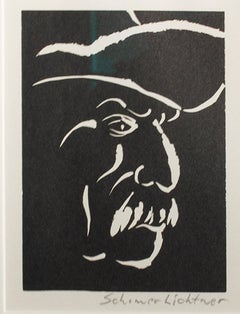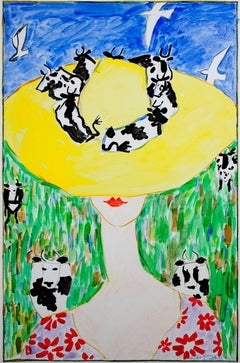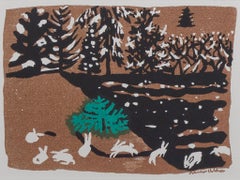Gustave Moeller
1930s American Modern Animal Prints
Woodcut
1930s Modern Portrait Prints
Woodcut
1940s American Modern Animal Prints
Screen
1950s American Modern Abstract Prints
Screen
1990s Neo-Expressionist Figurative Sculptures
Wood, Paint
1980s Contemporary Landscape Prints
Screen, Ink
1940s American Modern Landscape Prints
Screen
1930s American Modern Figurative Prints
Linocut
1960s American Modern Landscape Prints
Black and White, Lithograph
Late 20th Century American Modern Landscape Prints
Black and White, Paper, Linocut
Late 20th Century American Modern Abstract Prints
Paper, Black and White, Linocut
1920s American Modern Portrait Prints
Linocut
1930s American Modern Figurative Prints
Linocut
Recent Sales
1990s Contemporary Figurative Paintings
Canvas, Acrylic
1940s American Modern Landscape Prints
Screen
1960s American Modern Landscape Prints
Black and White, Lithograph
Late 20th Century American Modern Abstract Prints
Paper, Black and White, Linocut
1960s American Modern Landscape Prints
Black and White, Lithograph
Late 20th Century American Modern Abstract Prints
Paper, Black and White, Linocut
Gustave Moeller For Sale on 1stDibs
How Much is a Gustave Moeller?
Schomer Lichtner for sale on 1stDibs
Schomer Lichtner was well known for his whimsical cows and ballerinas and abstract imagery. He and his late wife, Ruth Grotenrath (1912–88), both well-known Wisconsin artists, began their prolific careers as muralists for WPA projects, primarily post offices. Lichtner also painted murals for industry and private clients. Lichtner was a printmaker and produced block prints, lithographs and serigraph prints. His casein (paint made from dairy products) and acrylic paintings are of the rural Wisconsin landscapes and farm animals. He became interested in cows when he and Ruth spent summers near Holy Hill in Washington County. According to David Gordon, director of the Milwaukee Art Museum, Lichtner had a tremendous joie de vivre and expressed it in his art.
Lichtner was nationally known for his whimsical paintings and sculptures of black-and-white-patterned Holstein cows and elegant ballerina dancers. Lichtner also painted all sorts of combinations of beautiful women, flowers and country landscapes. The late James Auer, former Milwaukee Journal Sentinel art critic, said that his art eventually "exploded into expressionistic design elements with bold, flat areas of color and high energy that anticipated Pop Art." Auer went on to describe Lichtner’s work as full of "wit, vigor and virtuosity." In as early as 1930, Lichtner’s work was shown at the prestigious Carnegie International Exhibition in New York and museums throughout the Midwest. As a student, he was a protégé of another icon of 20th century American art, Gustave Moeller.
Lichtner and his wife, Ruth, are celebrated as Milwaukee’s first couple of paintings and are regarded as major Wisconsin artists. Lichtner’s impressive production, perseverance, longevity and positive approach to his life and art made him and his work distinctive and much loved by his many admirers. His work is currently represented in collections at the Milwaukee Art Museum, the John Michael Kohler Art Center, the West Bend Museum and in the collections of many individuals. He continued to amaze and create with his whimsical paintings of ballerinas and cows. The Milwaukee Journal Sentinel's Auer referred to Lichtner as the artist laureate of Milwaukee. Lichtner was the official artist of the Milwaukee Ballet and was a recipient of the 2006 Wisconsin Visual Artist Lifetime Achievement Award. He passed away on May 9, 2006 at the age of 101.
A Close Look at Modern Art
The first decades of the 20th century were a period of artistic upheaval, with modern art movements including Cubism, Surrealism, Futurism and Dadaism questioning centuries of traditional views of what art should be. Using abstraction, experimental forms and interdisciplinary techniques, painters, sculptors, photographers, printmakers and performance artists all pushed the boundaries of creative expression.
Major exhibitions, like the 1913 Armory Show in New York City — also known as the “International Exhibition of Modern Art,” in which works like the radically angular Nude Descending a Staircase by Marcel Duchamp caused a sensation — challenged the perspective of viewers and critics and heralded the arrival of modern art in the United States. But the movement’s revolutionary spirit took shape in the 19th century.
The Industrial Revolution, which ushered in new technology and cultural conditions across the world, transformed art from something mostly commissioned by the wealthy or the church to work that responded to personal experiences. The Impressionist style emerged in 1860s France with artists like Claude Monet, Paul Cézanne and Edgar Degas quickly painting works that captured moments of light and urban life. Around the same time in England, the Pre-Raphaelites, like Edward Burne-Jones and Dante Gabriel Rossetti, borrowed from late medieval and early Renaissance art to imbue their art with symbolism and modern ideas of beauty.
Emerging from this disruption of the artistic status quo, modern art went further in rejecting conventions and embracing innovation. The bold legacy of leading modern artists Georges Braque, Pablo Picasso, Frida Kahlo, Salvador Dalí, Henri Matisse, Joan Miró, Marc Chagall, Piet Mondrian and many others continues to inform visual culture today.
Find a collection of modern paintings, sculptures, prints and other fine art on 1stDibs.
Finding the Right Prints-works-on-paper for You
Decorating with fine art prints — whether they’re figurative prints, abstract prints or another variety — has always been a practical way of bringing a space to life as well as bringing works by an artist you love into your home.
Pursued in the 1960s and ’70s, largely by Pop artists drawn to its associations with mass production, advertising, packaging and seriality, as well as those challenging the primacy of the Abstract Expressionist brushstroke, printmaking was embraced in the 1980s by painters and conceptual artists ranging from David Salle and Elizabeth Murray to Adrian Piper and Sherrie Levine.
Printmaking is the transfer of an image from one surface to another. An artist takes a material like stone, metal, wood or wax, carves, incises, draws or otherwise marks it with an image, inks or paints it and then transfers the image to a piece of paper or other material.
Fine art prints are frequently confused with their more commercial counterparts. After all, our closest connection to the printed image is through mass-produced newspapers, magazines and books, and many people don’t realize that even though prints are editions, they start with an original image created by an artist with the intent of reproducing it in a small batch. Fine art prints are created in strictly limited editions — 20 or 30 or maybe 50 — and are always based on an image created specifically to be made into an edition.
Many people think of revered Dutch artist Rembrandt as a painter but may not know that he was a printmaker as well. His prints have been preserved in time along with the work of other celebrated printmakers such as Pablo Picasso, Salvador Dalí and Andy Warhol. These fine art prints are still highly sought after by collectors.
“It’s another tool in the artist’s toolbox, just like painting or sculpture or anything else that an artist uses in the service of mark making or expressing him- or herself,” says International Fine Print Dealers Association (IFPDA) vice president Betsy Senior, of New York’s Betsy Senior Fine Art, Inc.
Because artist’s editions tend to be more affordable and available than his or her unique works, they’re more accessible and can be a great opportunity to bring a variety of colors, textures and shapes into a space.
For tight corners, select small fine art prints as opposed to the oversized bold piece you’ll hang as a focal point in the dining area. But be careful not to choose something that is too big for your space. And feel free to lean into it if need be — not every work needs picture-hanging hooks. Leaning a larger fine art print against the wall behind a bookcase can add a stylish installation-type dynamic to your living room. (Read more about how to arrange wall art here.)
Find fine art prints for sale on 1stDibs today.
